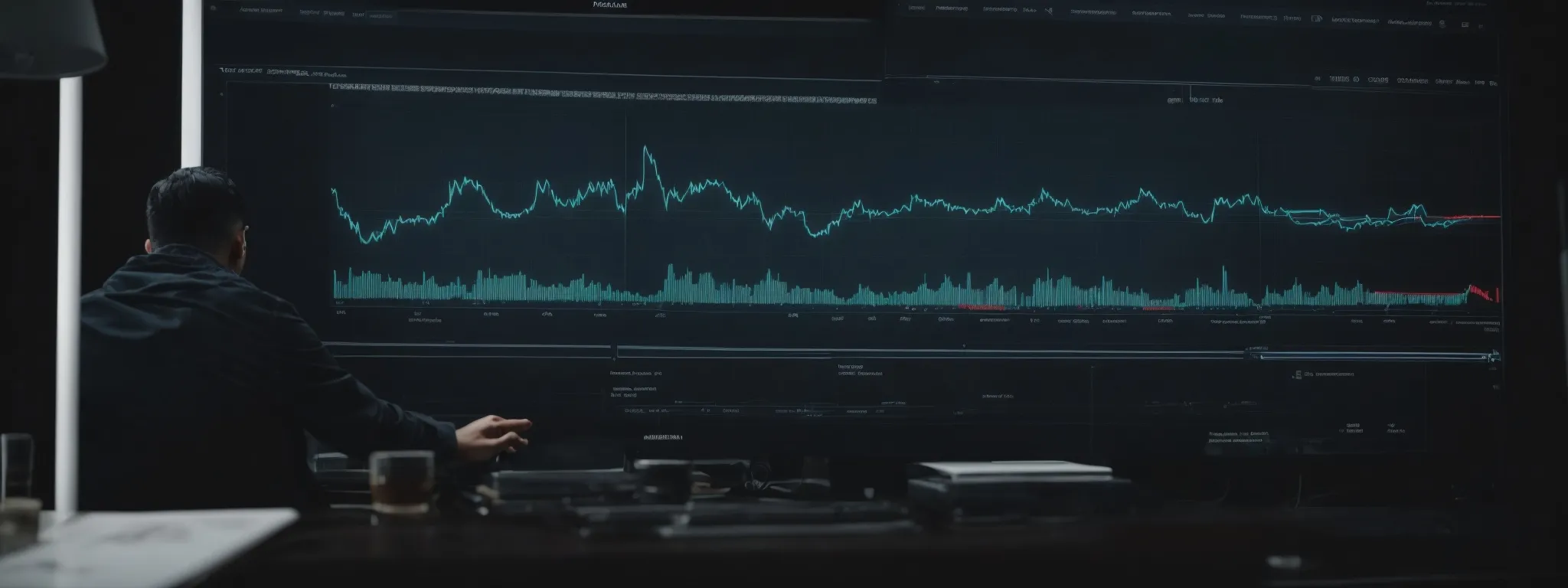SEO vs UX
Navigating the Crossroads of SEO and UX Design At the intersection of SEO and UX design lies a dynamic space where search engine optimizers and designers must […]
At the intersection of SEO and UX design lies a dynamic space where search engine optimizers and designers must harmonize their crafts to forge exceptional digital experiences.
Mastery in this domain entails far more than mere technical proficiency; it demands a nuanced appreciation of the symbiotic relationship between a website’s visibility and its usability.
As search engines increasingly prioritize user experience as a ranking factor, professionals from both fields are prompted to refine their strategies, ensuring that SEO directives complement, rather than compromise, the intuitive nature of UX design.
Keep reading to unearth the potent blend of SEO and UX design, which when optimized collectively, can propel any company’s online presence to unprecedented levels of engagement and success.
Key Takeaways
- LinkGraph’s SEO Services Integrate With UX Design to Improve Website Visibility and User Interaction
- User-Centric UX Design Significantly Impacts SEO Metrics Like Bounce Rate and Search Rankings
- Responsive and Intuitive Design Elements Are Crucial for Satisfying Search Engines’ Mobile-First Indexing and User Expectations
- SEO and UX Professionals at LinkGraph Work in Tandem to Create Optimized Web Experiences From the Design Phase
- Ongoing Analysis and Refinement of Both SEO and UX Are Essential for Maintaining a Website’s Competitive Edge
Understanding SEO’s Role in User Experience

In the fast-evolving digital landscape, the interconnectedness between search engine optimization and user experience design has become increasingly pivotal to a website’s success.
As industry professionals work to navigate this junction, defining SEO within the user journey emerges as an essential endeavor for optimizing web presence and engagement.
Enhancing a site’s visibility through improved search rankings invariably bolsters user experience—allowing visitors seamless navigation and instant gratification of their search intent.
Simultaneously, SEO relies on a set of signals capable of significantly shaping user behavior, from site structure to load speed, thereby necessitating a strategic balance that reflects the goals of both search engine algorithms and the expectations of the end user.
Defining SEO Within the User Journey
At the core of every successful Digital Strategy Lies the Recognition that search engine optimization is more than a mere checklist of keywords and backlinks. It’s an intricate part of the user’s journey from the moment they enter a search query to the eventual engagement on a landing page, engineered to fulfill their needs and elevate the user’s experience.
LinkGraph’s SEO services intricately intertwine with user experience design, ensuring that the structure and content of a website not only resonate with search engine ranking principles but also cater to the real-time demands and behaviors of the audience. This synergy is the cornerstone for creating an online presence that is both discoverable and delightful to navigate.
The Impact of Search Rankings on UX
Commanding distinguished search rankings ultimately propels a website’s user experience to new heights. Such prominence in SERPs not only increases visibility but also instills a sense of trust and authority among users, encouraging further engagement with the site’s offerings.
The algorithmic affinity for high-quality UX design directly feeds into SEO Performance, With Search Engines Prioritizing websites that exhibit clear, intuitive navigation, and relevance to the user’s search criteria. This alliance between search engine preferences and superior user experiences underscores the critical impact of SEO on every facet of a digital interaction.
SEO Signals That Influence User Behavior
LinkGraph’s SEO services Meticulously Analyze and Optimize a multitude of SEO signals to positively influence user behavior. These signals range from structural elements like effective site architecture and strategic internal linking to the nuance of meta descriptions, each crafted to meet specific search criteria and enhance the user’s encounter with the site.
The significance of robust SEO signals cannot be understated when examining their role in user behavior. Through meticulous attention to each detail, from page speed optimization to the deployment of readable and engaging content, LinkGraph harnesses these signals to align tightly with search engine algorithms and human users’ expectations.
| SEO Signal | Impact on User Behavior | LinkGraph’s Approach |
|---|---|---|
| Page Speed | Improves user satisfaction and reduces bounce rate. | Utilizes advanced techniques to accelerate loading times. |
| Readability | Engages users with clear, accessible content. | Implements readability tools for SEO to enhance comprehension. |
| Meta Descriptions | Directly influences click-through rates from SERPs. | Crafts compelling snippets that encapsulate user intent. |
| Internal Linking | Guides users through the website, increasing engagement. | Designs a strategic link structure to aid user navigation. |
Unpacking UX Design for SEO Strategists

In the quest for digital prominence, SEO strategists must consider the profound influence of user experience (UX) design.
Embarking on this exploratory venture, they encounter core principles, which dictate the seamless interaction between a website and its visitors.
The fabric of these UX tenets intricately weaves into SEO metrics, directly affecting search visibility and user engagement.
Each element of user-centric design becomes a pivotal factor in enhancing site metrics, shaping a digital environment where users do not simply visit but actively engage.
LinkGraph’s SEO services place paramount importance on this harmonious integration, crafting strategies that acknowledge the role of UX in the grand schema of search optimization.
Core Principles of UX Design
At the heart of any effective digital strategy, UX design champions simplicity and intuitiveness. Important principles include ensuring that navigation is logical and that content is easily digestible, all while maintaining a consistent visual language that resonates with the audience.
Accessibility stands out as one of the core pillars of user experience design. Guaranteeing that a website is usable for people of all abilities is not just a matter of compliance, but it is also integral to expanding a site’s reach and providing equal access to information and services:
| UX Principle | SEO Benefit |
|---|---|
| Logical Navigation | Decreases bounce rate and aids search engine crawlers. |
| Consistent Design | Strengthens brand identity and user recognition in search results. |
| Content Accessibility | Widens audience reach and potential for increased engagement. |
How UX Design Affects SEO Metrics
The subtle nuances in UX design are potent influencers of SEO metrics, extending their reach beyond visual appeal to significantly impact site authority and search rankings. An intuitive and responsive design ensures that users find value and relevance in the content, subsequently reducing bounce rates and signaling to search engines the site’s quality and credibility.
Dedicated UX design cultivates an environment where users remain engaged, a facet that search engines perceive as a testament to a site’s relevance for a given query. This sustained engagement not only serves the immediate needs of the user but also enhances the site’s authority, further solidifying its position in search results.
| UX Design Element | SEO Metric Affected | Reason for Impact |
|---|---|---|
| Responsive Design | Search Rankings | Improved user experience signals site quality to search engines. |
| User Engagement | Time on Site | Longer sessions indicate to search engines that content is relevant and valuable. |
| Intuitive Navigation | Bounce Rate | Seamless user pathway reduces early exits and implies a positive experience. |
User-Centric Design for Better Engagement
Embracing user-centric design, LinkGraph’s SEO services meticulously construct digital experiences that resonate with users’ needs and expectations. By Prioritizing Engagement Through Intuitive Layouts and personalized content, these meticulously tailored designs encourage users to interact more deeply with the website, thereby elevating both their satisfaction and the site’s SEO performance.
This alignment of user-centric principles with SEO tactics culminates in a holistic web experience, where design elements and optimization strategies converge to meet the dual demands of human users and search engine algorithms. The result is a seamless integration, ultimately leading to increased loyalty and more meaningful interactions, indispensable for achieving long-term digital success.
Striking the Balance Between SEO and UX

In the realm where search engine optimization and user experience design converge, attaining equilibrium is not merely beneficial but imperative for success.
Professionals in both fields strive to map out strategies that resonate with their shared objectives of visibility and user satisfaction.
By dissecting how these twin elements coalesce, industry experts are able to forge methodologies that champion a cohesive digital presence.
Identifying mutual goals, deploying tactics that unify SEO and UX, and analyzing real-world successes where these elements synchronize, illuminate the path for crafting compelling user journeys magnified by search engine affinity.
Identifying Common Goals in SEO and UX
In the search for a superior web presence, SEO and UX design reveal overlapping objectives: enhancing a site’s discoverability while satisfying user demands. Both disciplines focus on delivering content that captivates and retains an audience, ensuring that the user finds what they seek with ease and clarity.
This alignment of objectives paves the road for professionals to enact Data-Driven Strategies That Bolster both search engine visibility and user engagement. Rigorous keyword research, informed by user behavior, and the crafting of intuitive web design lay the groundwork for this goal convergence:
| SEO/UX Objective | Purpose | Strategic Outcome |
|---|---|---|
| Rich, Accessible Content | To inform and engage the user. | Improved search rankings and user satisfaction. |
| Seamless Navigation | To guide users efficiently to their desired destination. | Reduction in bounce rates and enhancement of the user’s journey. |
| Responsive Design | To provide a consistent experience across all devices. | Increased mobile usability scores and universal user appeal. |
Tactics for Harmonizing SEO and UX Strategies
LinkGraph’s SEO team judiciously applies SearchAtlas SEO software to pilot strategies that knit SEO and UX disciplines into a unified front. The focus steers towards ensuring that metadata, URL structures, and even alt text for images add context for search engines, while simultaneously serving to enhance the navigability and interpretability for the user.
Executing on-page SEO services that prioritize both keyword relevance and content quality, this synchronization supports robust SEO content strategies designed to meet stringent search engine algorithms and favor high-value user engagement. LinkGraph crafts each element of a website’s design with an astute appreciation for how these components influence not just rankings, but the overall satisfaction and interaction of the visitor.
Case Studies: When SEO and UX Align
LinkGraph’s SEO services have been instrumental in manifesting successful cases where SEO and UX harmoniously contribute to a site’s triumph. An illustrative example is found in a client’s revamped website, which, post-optimization, not only climbed search engine rankings but also exhibited a marked increase in user engagement metrics, demonstrating the potency of this dual approach.
A closer investigation into a specific e-commerce platform’s redevelopment reveals how seamlessly integrating SearchAtlas SEO software with user-centric design elements led to a substantial uplift in conversions. The meticulous refinement of product pages, marrying SEO insights and user-focused layout, epitomized the symbiotic relationship between SEO strategies and UX design in action.
How High-Quality UX Enhances SEO Results

In the intricate dance between SEO and UX Design, enhancing the user experience (UX) is not just a matter of aesthetic appeal or navigational convenience—it’s a cogent factor influencing a site’s SEO performance.
Google’s algorithms have evolved to place an ever-increasing emphasis on user experience, recognizing that the satisfaction of the user is indispensable to a website’s relevance and authority.
Within this nexus, distinct UX design features emerge as pivotal allies in the quest for SEO excellence.
Measuring the SEO impact of stellar UX necessitates a keen understanding of both technical functionality and the subtler dimensions of user interaction, elements that are central to amplifying a website’s ranking potential while ensuring the fulfillment of the end-user’s expectations and needs.
Google’s Emphasis on User Experience in Rankings
Google’s algorithm updates have consistently underscored the importance of user experience as a determinant for search rankings. Recognizing that a positive UX translates to higher user satisfaction, search engines now factor these elements into their evaluation of a website’s value proposition.
This pivot towards UX quality has led establishments like LinkGraph to emphasize white label SEO services that integrate UX considerations into their core SEO strategies, thus ensuring that their clients’ websites not only perform well in search engine results pages (SERPs) but also meet the expectations of their end-users.
UX Design Features That Boost SEO
Within the scope of user experience design, comprehensive elements like a well-thought-out information architecture and mobile-responsive layouts play a crucial role in amplifying a website’s SEO performance. LinkGraph’s adept deployment of these UX features enables sites to align with Google’s mobile-first indexing, effectively boosting their visibility in search engine results while simultaneously catering to users’ expectations for seamless cross-device functionality.
Moreover, the intentional curation of interactive elements that facilitate user engagement, such as intuitive call-to-action buttons and accessible contact forms, contribute to enhanced dwell time and lower bounce rates. These metrics signal to search engines that the content is engaging and valuable, prompting algorithms to adjust rankings favorably, a nuance of the user experience to SEO efficacy that LinkGraph masterfully capitalizes upon.
Measuring the SEO Value of Great UX
Discerning the SEO Value of high-caliber user experience design hinges on LinkGraph’s ability to analyze a site’s performance metrics, particularly those reflecting user interaction. By evaluating increases in organic traffic, extended session durations, and overall engagement levels, they can directly correlate superior UX design features to enhancements in search engine ranking positions.
Professionals at LinkGraph Harness SearchAtlas SEO Software’s Refined Data Analytics to quantify the impact of UX on SEO success, distilling complex user behavior patterns into actionable insights. Their calculated approach reveals the tangible benefits that optimized user experience brings to a website, such as improved click-through rates and amplified user retention, which are critical indicators of robust SEO outcomes.
Integrating SEO With UX Design From the Start

At the juncture where SEO and UX design interlace, professionals are often challenged to cultivate a symbiotic relationship that strengthens a website’s foundational blueprint from inception.
A collaborative approach between SEO and UX teams is no longer a luxury but a necessity in contemporary web development strategies.
Initiating the design process with SEO considerations at the forefront ensures seamless integration, culminating in a robust online presence that caters to both the discerning eyes of search engines and the intuitive needs of users.
Acknowledging the significance of marrying these disciplines informs the conversation surrounding the importance of SEO-friendly design projects and the key considerations that underpin them.
Collaborative Approaches Between SEO & UX Teams
At the nexus of technological innovation and strategic planning, LinkGraph’s SEO services and UX design team unite to form a powerful alliance. By fostering regular communication and shared workflows, these experts devise cohesive strategies that elegantly blend SEO prerequisites with superior UX design, keeping both teams aligned towards the common goal of nurturing an engaging and search-optimized web environment.
This dual-focused team effort is guided by the expertise of seasoned professionals who ensure every aspect of a website, from the architecture to the user interface, is constructed with a keen eye for SEO impact and user-centric design. LinkGraph’s commitment to this cooperative endeavor strengthens its mission to deliver digital platforms that excel in both performance and usability.
Building SEO Into the UX Design Process
Embarking on the quest to craft a seamless online experience, LinkGraph’s experts ensure that SEO principles are intricately woven into the UX design process from the onset. They acknowledge that by prioritizing both search engine guidelines and user needs during the conceptual design phase, the resulting products are naturally optimized for performance and user engagement.
In the meticulous orchestration of content, interface elements, and navigational pathways:
- Professionals at LinkGraph meticulously map out the site’s architecture to cater to both the logical flow favored by search engines and the intuitive journey expected by users.
- Each design decision is informed by relevant keyword research and user intent analysis, ensuring that every text block, image, and call-to-action is purposefully placed for maximum SEO and UX impact.
Leveraging this proactive approach, LinkGraph’s competent teams devise digital experiences that resonate authentically with search algorithms and human users alike, setting a new standard for industry best practices in SEO and UX collaboration.
Key Considerations for SEO-Friendly Design Projects
In the interplay between search engine optimization and user experience, initiating design projects with SEO-friendly considerations is a linchpin for the enduring success of a website. Professionals at LinkGraph assess and scrutinize every aspect of the user interface, ensuring it aligns with SEO best practices without compromising on the sophistication of the design, thereby delivering robust platforms with organic growth potential.
Furthermore, during the conception of SEO-friendly projects, LinkGraph’s experts meticulously converge site speed optimization with the aesthetics of responsive design, recognizing that this blend facilitates Superior Search Engine Indexing and satisfies the contemporary user’s demand for quick and accessible information irrespective of the device used.
Practical Tips for UX and SEO Synergy

At the dynamic confluence of search engine optimization and user experience design, web professionals are tasked with crafting strategies that transcend traditional boundaries.
Pioneers are leveraging SEO data to refine UX decisions, employing insightful UX methodologies to bolster search visibility, and committing to the continued evaluation and optimization of both realms.
This holistic approach fosters a digital ecosystem wherein websites are not only found but are also intuitive and engaging, encapsulating the essence of a truly synergetic SEO and UX union.
Using SEO Data to Inform UX Decisions
Proactive refinement of UX design is fueled by an insightful analysis of SEO data, signifying a methodical union between the two disciplines. LinkGraph’s SEO professionals harness this data, analyzing patterns like user flow and search query trends to architect interfaces that speak directly to the user’s journey while enhancing organic search performance.
Enriched by the robust insights from SearchAtlas SEO software, these experts meticulously calibrate user interfaces, ensuring elements like navigation menus and calls-to-action are not only aesthetically aligned but are also data-driven to Optimize User Interaction and Satisfaction. By doing so, LinkGraph effectively bridges the gap between user expectations and search engine requirements, crafting an intuitive digital ecosystem primed for success.
UX Techniques That Improve Search Visibility
Employing user-centric UX techniques significantly enhances a website’s visibility in search engine results. Strategic placement of relevant, compelling content improves not only the user experience but also signals to search engines the value and relevancy of a page, boosting its visibility in the digital landscape.
Smart UX design incorporates clear, actionable calls to action, guiding users towards meaningful interactions that search engines can interpret as signals of a website’s importance. Organized information architecture and intuitive navigation ensure that both users and search engines can easily discover and value the content:
- Implement structured, hierarchical layouts to help users and search engine crawlers navigate the website efficiently.
- Optimize headings and titles to align with users’ search intent, while also catering to search engine algorithms.
- Foster an engaging interface design that encourages users to spend more time on the site, which can lead to improved search rankings.
Ongoing Evaluation and Optimization of SEO and UX
Maintaining a website’s prowess in the dual arenas of SEO and UX requires diligent ongoing evaluation. LinkGraph’s SEO experts Deploy Advanced Analytics to continually assess the interaction between site design and user behavior, ensuring that refinements are consistently aligned with evolving search engine algorithms and shifting user expectations.
This commitment to optimization is not episodic but rather a continuous process that LinkGraph champions. By systematically updating SEO strategies and UX enhancements, they ensure that the digital presence they cultivate remains at the forefront of industry innovation, resonating with both search engines and the target audience.
Conclusion
Navigating the crossroads of SEO and UX Design is crucial for creating effective digital strategies that enhance a website’s visibility and user engagement.
By integrating SEO considerations into the user experience from the start, we can shape websites that satisfy both search engine algorithms and user needs.
SEO data guides UX decisions, ensuring that every element of design aligns with user intent and search performance.
Regular collaboration between SEO and UX professionals ensures a harmonious balance, driving higher search rankings and a more intuitive user journey.
Ultimately, the shared goal is to craft an online presence that exudes authority, enriches the user experience, and achieves long-term success in the ever-competitive digital landscape.















































































